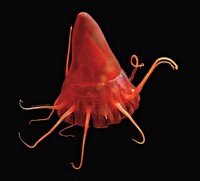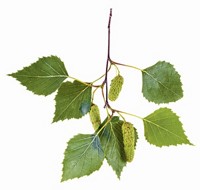Advertisement
Grab your lab coat. Let's get started
Welcome!
Welcome!
Create an account below to get 6 C&EN articles per month, receive newsletters and more - all free.
It seems this is your first time logging in online. Please enter the following information to continue.
As an ACS member you automatically get access to this site. All we need is few more details to create your reading experience.
Not you? Sign in with a different account.
Not you? Sign in with a different account.
ERROR 1
ERROR 1
ERROR 2
ERROR 2
ERROR 2
ERROR 2
ERROR 2
Password and Confirm password must match.
If you have an ACS member number, please enter it here so we can link this account to your membership. (optional)
ERROR 2
ACS values your privacy. By submitting your information, you are gaining access to C&EN and subscribing to our weekly newsletter. We use the information you provide to make your reading experience better, and we will never sell your data to third party members.
Synthesis
Newscripts
Dirty Money, Barotraumatized Bats, Living In A Tree
by Kenneth J. Moore.
September 15, 2008
| A version of this story appeared in
Volume 86, Issue 37
We all know money is dirty. You pay in cash for a meal, but you wash your hands before you eat in case the person who had the bill before you sneezed on it. But would you worry if the money had cocaine on it instead of germs? Researchers in Spain recently reported that euros collected there have on average the HIGHEST LEVELS OF COCAINE among various currencies (Trends Anal. Chem. 2008, 27, 344).

The study reviewed cocaine detection methods, such as gas chromatography, as well as other methods that cause less damage to the bill, such as immunoassays. The researchers found that euro bills in Spain on average contain 155 µg of cocaine, with a maximum of 889 µg. Previous studies on the U.S. dollar yielded averages ranging from 2.86 to 28.75 µg, but the most highly contaminated bill in the U.S. studies had about 1.33 mg of cocaine.
Sorting machines and ATMs easily spread trace amounts of the illicit substance. But never fear. You likely won’t fail a drug test by handling bills to pay for your coffee; only people who handle many bills on a daily basis, such as bank tellers, need to worry about the effects of cocaine contamination.
Despite being ostensibly environmentally friendly, electricity-generating wind turbines are cutting down BAT POPULATIONS. Dead, battered birds have been found around wind turbines for decades, but people have wondered about dead bats, whose echolocation should have allowed them to avoid moving turbine blades even better than they avoid stationary objects.
The conundrum has now been explained (Curr. Biol. 2008, 18, R695). Erin F. Baerwald, a graduate student at the University of Calgary, in Alberta, and colleagues dissected 75 bats found dead near wind turbines. The bats had no external injuries similar to those sustained by the dead birds. Of the dead bats, 69 had internal hemorrhaging. The findings suggest that the wind turbines cause a drop in air pressure, which ruptures blood vessels in bats’ lungs. This rupturing, called pulmonary barotrauma, is similar to what could happen if scuba divers return to the surface too quickly. Birds do not show such symptoms because their lungs are more rigid and don’t expand like mammals’ lungs do.
Beyond placement of wind-energy sites, Baerwald suggests shutting off turbines in slower winds, when bats are more active, and in autumn, when bats migrate.
Plantware, a company that produces benches and streetlamps made from living trees, and researchers at Tel Aviv University are teaming up to get trees to grow into the shape of a house.
This ECOARCHITECTURAL ENDEAVOR is aimed to help protect future tree-dwellers from earthquakes and storms and, obviously, be more ecologically and environmentally friendly. Living structures react to mechanical stress, such as strong winds, and can heal themselves from injuries, including cracking.

The structures are molded by initially growing the trees aeroponically, without soil or water, which deters root lignification—the deposition of lignin in plant cell walls that causes roots to become harder and thicker. When long enough, the soft roots are placed on metal templates that dictate the form they will eventually take. When the root tips are placed in soil, lignification ensues, and the roots become woody and the canopy of the tree fills out. A few years later, the tree is perfectly shaped and ready to sit on or live in.
This week's column was written by Kenneth J. Moore. Please send comments and suggestions to newscripts@acs.org.





Join the conversation
Contact the reporter
Submit a Letter to the Editor for publication
Engage with us on Twitter